Refine listing
Actions for selected content:
16950 results
3 - Starburst and AGN activity in Spitzer-selected sources at high-z
- from Part I - AGNs, starbursts and galaxy evolution
-
-
- Book:
- AGN Feedback in Galaxy Formation
- Published online:
- 10 November 2010
- Print publication:
- 28 October 2010, pp 21-28
-
- Chapter
- Export citation
16 - Physics and fate of jet-related emission line regions
- from Part IV - Models and numerical simulations: methods and results
-
-
- Book:
- AGN Feedback in Galaxy Formation
- Published online:
- 10 November 2010
- Print publication:
- 28 October 2010, pp 183-193
-
- Chapter
- Export citation
The organising committees
-
- Book:
- AGN Feedback in Galaxy Formation
- Published online:
- 10 November 2010
- Print publication:
- 28 October 2010, pp xv-xvi
-
- Chapter
- Export citation
Part III - Outflows and radio galaxies
-
- Book:
- AGN Feedback in Galaxy Formation
- Published online:
- 10 November 2010
- Print publication:
- 28 October 2010, pp 61-62
-
- Chapter
- Export citation
7 - AGN, downsizing and galaxy bimodality
- from Part II - Co-evolution of black holes and galaxies
-
-
- Book:
- AGN Feedback in Galaxy Formation
- Published online:
- 10 November 2010
- Print publication:
- 28 October 2010, pp 52-60
-
- Chapter
- Export citation
12 - Physical models of AGN feedback
- from Part IV - Models and numerical simulations: methods and results
-
-
- Book:
- AGN Feedback in Galaxy Formation
- Published online:
- 10 November 2010
- Print publication:
- 28 October 2010, pp 111-156
-
- Chapter
- Export citation
Preface
-
- Book:
- AGN Feedback in Galaxy Formation
- Published online:
- 10 November 2010
- Print publication:
- 28 October 2010, pp xiii-xiv
-
- Chapter
- Export citation
2 - Suppressing cluster cooling flows by multiple AGN activity
- from Part I - AGNs, starbursts and galaxy evolution
-
-
- Book:
- AGN Feedback in Galaxy Formation
- Published online:
- 10 November 2010
- Print publication:
- 28 October 2010, pp 11-20
-
- Chapter
- Export citation
5 - The symbiosis between galaxies and SMBHs
- from Part II - Co-evolution of black holes and galaxies
-
-
- Book:
- AGN Feedback in Galaxy Formation
- Published online:
- 10 November 2010
- Print publication:
- 28 October 2010, pp 41-46
-
- Chapter
- Export citation
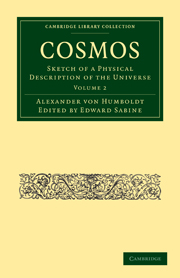
Cosmos
- Sketch of a Physical Description of the Universe
-
- Published online:
- 05 October 2010
- Print publication:
- 10 June 2010
- First published in:
- 1848

Autobiography of Sir George Biddell Airy
-
- Published online:
- 05 October 2010
- Print publication:
- 24 June 2010
- First published in:
- 1896
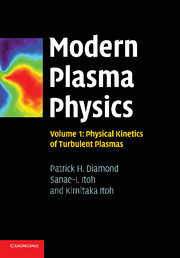
Modern Plasma Physics
-
- Published online:
- 05 October 2010
- Print publication:
- 17 June 2010
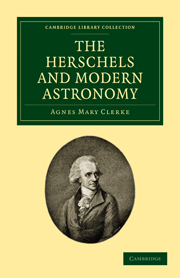
The Herschels and Modern Astronomy
-
- Published online:
- 05 October 2010
- Print publication:
- 20 May 2010
- First published in:
- 1895

The Reminiscences of an Astronomer
-
- Published online:
- 05 October 2010
- Print publication:
- 20 May 2010
- First published in:
- 1903
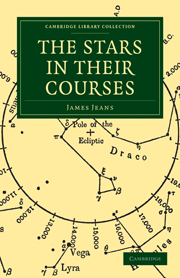
Stars in Their Courses
-
- Published online:
- 05 October 2010
- Print publication:
- 20 July 2009
- First published in:
- 1931
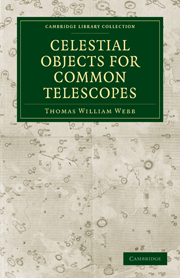
Celestial Objects for Common Telescopes
-
- Published online:
- 05 October 2010
- Print publication:
- 10 June 2010
- First published in:
- 1859
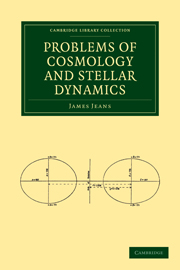
Problems of Cosmology and Stellar Dynamics
-
- Published online:
- 05 October 2010
- Print publication:
- 20 July 2009
- First published in:
- 1919
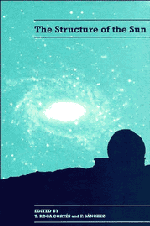
The Structure of the Sun
-
- Published online:
- 05 October 2010
- Print publication:
- 28 August 1996
11 - Astrophysical influences on planetary climate systems
-
-
- Book:
- Heliophysics: Evolving Solar Activity and the Climates of Space and Earth
- Published online:
- 05 April 2013
- Print publication:
- 23 September 2010, pp 299-332
-
- Chapter
- Export citation
Appendix I - Authors and editors
-
- Book:
- Heliophysics: Evolving Solar Activity and the Climates of Space and Earth
- Published online:
- 05 April 2013
- Print publication:
- 23 September 2010, pp 449-450
-
- Chapter
- Export citation
